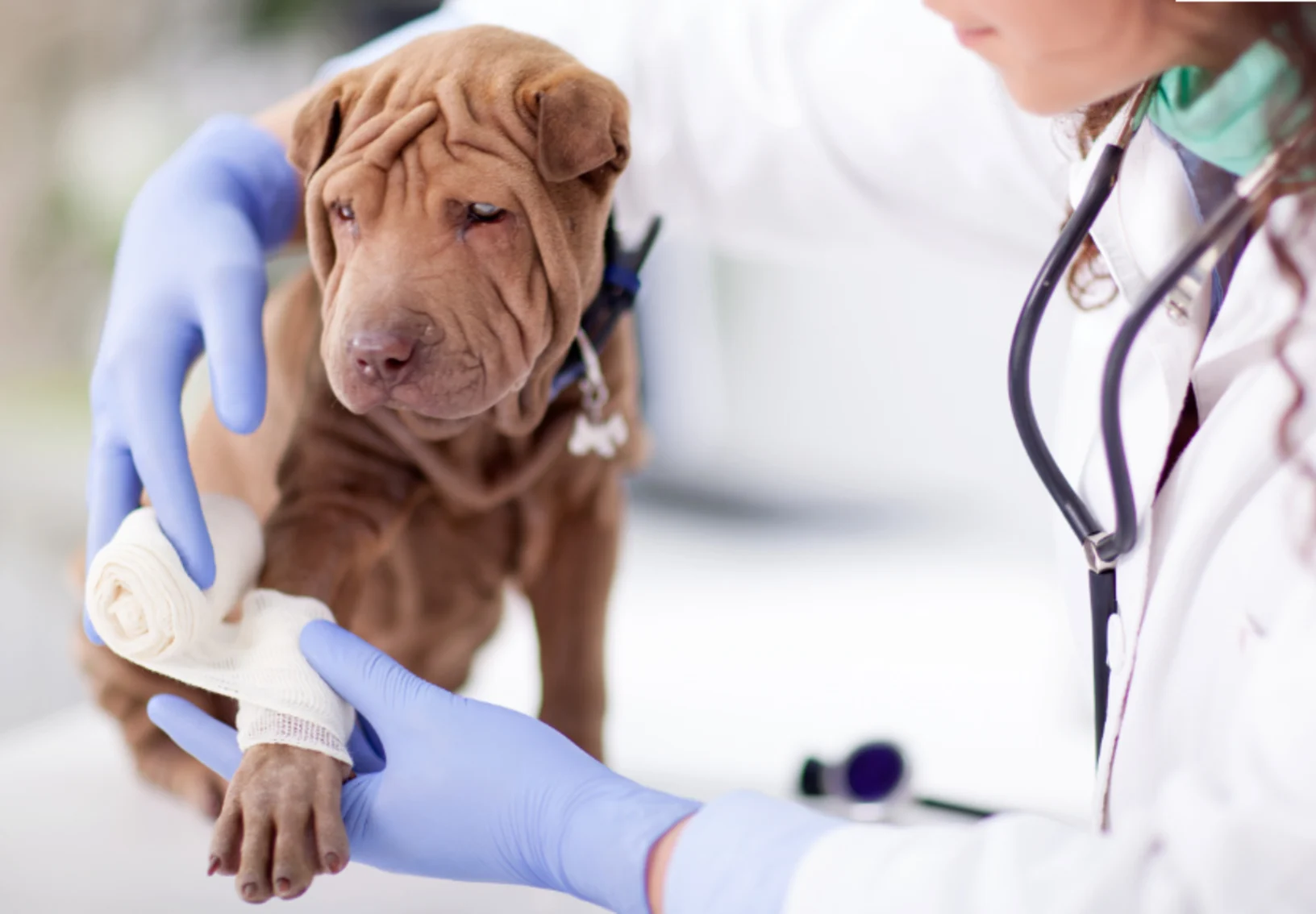How to Handle After-Hours Pet Emergencies with a Local 24 hour vet near me
How to Handle After-Hours Pet Emergencies with a Local 24 hour vet near me
Blog Article
Why Pet Rehab Is Vital: the Perks of Veterinarian Providers for Your Pet dog's Recovery
Pet rehab is a necessary part of healing for pet dogs facing injuries or specials needs. Veterinary services offer critical assistance via tailored rehab plans that resolve private requirements. These plans frequently include pain management, physical treatment, and nutritional support. Comprehending the different facets of pet rehab can illuminate its significance in boosting healing outcomes. What specific benefits do these solutions offer, and just how can they transform a pet dog's healing journey?
Recognizing Pet Rehabilitation
Pet rehab encompasses a variety of therapeutic techniques focused on restoring the wellness and performance of injured or disabled animals. This area integrates different techniques, consisting of physical therapy, hydrotherapy, and work-related therapy, tailored to meet the specific needs of each pet. Rehab experts evaluate an animal's problem, creating customized treatment plans that may include exercises to enhance muscular tissues, boost flexibility, and boost general well-being. The process not just concentrates on physical healing but also addresses psychological and behavior facets. Animals often experience stress and stress and anxiety following an injury, making mental health and wellness factors to consider necessary in recovery. By creating a supportive atmosphere, therapists can assist pets regain their self-confidence and adapt to their new scenarios. With normal sessions, pets can experience significant renovations, ultimately leading to a far better lifestyle. In general, recognizing pet rehab highlights its value in promoting healing and boosting the bond between pet dogs and their proprietors.
The Duty of Discomfort Monitoring in Recuperation
Exactly how crucial works discomfort monitoring in the healing of injured pets? It plays an important function in helping with recovery and enhancing the total well-being of animals. Appropriate discomfort administration not only alleviates discomfort however additionally promotes wheelchair, allowing animals to join rehab tasks essential for healing. When discomfort is efficiently taken care of, pets have a tendency to respond favorably to therapy, leading to quicker rehab outcomes.Veterinarians utilize numerous techniques to analyze and resolve pain, consisting of drugs, acupuncture, and alternative treatments. By customizing pain management techniques to the specific demands of each pet, vets can assure that animals continue to be calm and participating throughout their healing journey. Decreasing pain assists lower stress, which can inhibit healing and extend recovery times. To summarize, reliable pain administration is vital for boosting the healing process and improving the lifestyle for damaged pets.
Physical Therapy Techniques for Pet Dogs
Various physical therapy strategies are available to aid in the recovery of animals recovering from injuries or surgical procedures (emergency vet). These methods can boost flexibility, soothe pain, and advertise recovery. Healing exercises, as an example, aid strengthen muscle mass and improve joint feature, permitting family pets to reclaim their physical capabilities progressively. Hand-operated treatment, which includes massage therapy and mobilization, can minimize stress and improve circulation, adding to a much faster recovery.Other methods such as easy series of movement exercises motivate joint versatility and reduce stiffness. Furthermore, electrical stimulation therapy may be utilized to boost nerves and muscles, promoting healing and pain relief.Veterinary professionals typically customize these techniques to every animal's particular requirements, guaranteeing an extensive rehab strategy. By implementing these physical treatment methods, pets can experience improved quality of life and a much more effective recovery from their ailments. The integration of these practices right into rehabilitation programs is necessary for optimal healing outcomes
Benefits of Hydrotherapy for Recovery
Hydrotherapy offers considerable advantages in pet recovery, particularly in boosting mobility. This water-based therapy promotes discomfort relief while providing comfort to harmed or recuperating family pets. In addition, it helps with strength-building exercises that add to total physical recuperation.
Enhanced Mobility Renovation
As animals recover from injuries or surgical treatments, enhanced mobility typically comes to be a key objective of their rehabilitation. Hydrotherapy works as a valuable tool in achieving this goal. Via water-based exercises, animals can take part in low-impact motions that assist in joint mobility and reinforce muscle mass without the stress and anxiety of weight-bearing activities. The buoyancy of water supports their bodies, allowing for increased series of activity and flexibility renovation. In addition, hydrotherapy motivates far better equilibrium and control, which are necessary for restoring typical activity patterns. Routine sessions can lead to substantial development in an animal's physical capabilities, ultimately boosting their lifestyle. This approach not just aids in recuperation however also advertises an extra energetic and meeting way of life post-rehabilitation.
Pain Alleviation and Comfort

Relief from pain is a vital facet of pet recovery, and hydrotherapy considerably contributes to this process. By using water's buoyancy, hydrotherapy reduces joint stress and anxiety and minimizes pain throughout activity. This therapeutic strategy offers a calming environment where animals can participate in mild workouts without the complete weight of their bodies affecting their healing. The cozy water boosts blood flow, advertising recovery while additionally urging leisure. Additionally, hydrotherapy sessions can be customized to fulfill the particular requirements of the pet, making sure suitable comfort. As animals experience decreased pain and enhanced convenience levels, their general willingness to take part in recovery activities usually enhances, resulting in a more effective recuperation trip. Consequently, hydrotherapy offers as a vital tool in enhancing discomfort alleviation and comfort during rehabilitation.
Strength Structure Workouts
Strength-building exercises play an important function in the rehabilitation process, with hydrotherapy offering one-of-a-kind benefits. This type of treatment utilizes water resistance to boost muscle strength without putting extreme strain on the joints. The buoyancy of water supports the animal's weight, permitting for safer motion and boosted variety of motion. Additionally, hydrotherapy can improve cardiovascular health and advertise overall fitness, helping in faster healing from injuries or surgeries. The controlled environment also reduces the danger of reinjury, making it a suitable option for pets requiring rehabilitation. Regular hydrotherapy sessions can bring about noticeable renovations in movement, stamina, and endurance, ultimately improving the animal's lifestyle and ability to return to regular activities.
Value of Customized Rehabilitation Plans
Customized rehabilitation strategies are essential for resolving the special demands of each animal, making certain individualized therapy techniques. These strategies permit reliable progression monitoring and required changes, fostering suitable healing end results. Additionally, a holistic technique can improve the total health of the pet, promoting a much more complete rehabilitation experience.
Individualized Treatment Approaches
While several rehabilitation programs adopt a one-size-fits-all approach, the one-of-a-kind demands of each pet require individualized therapy strategies for suitable recovery. Custom-made rehabilitation plans think about different aspects, including the animal's types, age, case history, and particular injuries or conditions. By customizing interventions, vets can attend to each pet's unique difficulties, optimizing the performance of the recovery procedure. Embellished strategies might include various techniques such as physical therapy, hydrotherapy, and healing workouts, making sure that the treatment aligns with the pet's abilities and development. In addition, tailored strategies cultivate a stronger bond between the pet and the caretaker, promoting a more appealing and encouraging healing atmosphere. Eventually, customized therapy is vital for achieving finest feasible results in pet recovery.
Progression Tracking and Adjustments

Holistic Recovery Techniques
Alternative recovery strategies are important for reliable animal rehab, as they emphasize the significance of individualized treatment strategies tailored per pet's particular requirements. This technique thinks about the physical, emotional, and ecological aspects affecting recovery. Personalized rehab strategies may consist of a mix of physical treatment, dietary counseling, and behavior alterations. By attending to these varied elements, vets can boost the overall health of the animal and advertise a faster recovery. Furthermore, such tailored approaches assist in a much deeper understanding of the pet's distinct difficulties, causing extra reliable interventions. Inevitably, alternative recovery approaches not only improve physical health and wellness however also contribute to the animal's psychological dog hospital emergency and emotional security, making certain an extensive rehabilitation experience.
The Impact of Nourishment on Healing
Nourishment plays a vital role in the healing procedure for rehabilitating animals, commonly identifying the rate and effectiveness of healing. A healthy diet provides the required nutrients that sustain tissue repair work, boost the body immune system, and enhance overall vigor. Protein is specifically crucial, as it assists in muscle mass restoring and healing from injuries. Crucial fatty acids, vitamins, and minerals likewise contribute to minimizing inflammation and advertising optimum mobile function.Veterinarians frequently emphasize the relevance of customized nutrition strategies, considering each animal's details needs, age, and health standing. Correct hydration is just as vital, as liquids help with vitamins and mineral absorption and aid in detoxing. By guaranteeing that pets obtain appropriate nutrition, caretakers can significantly improve their chances of a successful healing, resulting in much better long-term health and wellness outcomes. Ultimately, nourishment acts as a foundational component in the recovery trip, supporting pets in restoring stamina and resilience post-injury or illness.
Success Stories: Pets Who Thrived After Rehabilitation
Effective rehabilitation stories abound, showcasing the resilience of pets that have actually conquered considerable difficulties. Take, as an example, Bella, a gold retriever who endured extreme injuries from a car mishap. With committed veterinary treatment and a comprehensive rehab program, she restored her wheelchair and went back to her lively self, much to her owner's joy. Max, a senior cat identified with arthritis, experienced impressive improvement with a combination of physical therapy and pain monitoring. His newfound dexterity allowed him to appreciate his preferred sunbathing places once again. Another motivating case is that of Coco, a saved greyhound that got over anxiousness via habits modification and socialization strategies, enabling her to prosper in her brand-new home. These success stories exhibit the transformative power of pet recovery, highlighting that with the best support, pets can not only recuperate but lead meeting lives, enriching the bonds they share with their family members.
Regularly Asked Questions
Exactly how Long Does the Rehabilitation Process Generally Take for Animals?
The rehabilitation procedure for animals usually differs based on the injury or problem, varying from a couple of weeks to several months. Specific development, therapy type, and dedication to exercises considerably influence the general period of recovery.
Exist Any Type Of Dangers Linked With Animal Rehab?
Animal rehab may bring risks such as exacerbation of injuries, incorrect methods causing discomfort, or insufficient surveillance throughout healing. These factors can prevent development and impact the general performance of the rehabilitation procedure.

Can All Pets Advantage From Rehabilitation Solutions?
Not all pets might need rehab, yet several can profit significantly. Rehabilitation services can improve wheelchair, ease pain, and enhance overall wellness, especially for those recovering from injuries, surgeries, or persistent conditions.
How Can I Prepare My Pet Dog for Recovery Sessions?

What Indicators Show My Pet Dog Needs Rehab?
Signs suggesting a family pet may require rehabilitation include difficulty walking, hopping, lowered task degrees, hesitation to jump, or signs of discomfort. Observing these actions can motivate owners to look for expert analysis and therapy for their family pets.
Report this page